Mathematics of Finance
Data is displayed for academic year: 2023./2024.
Course Description
The course introduces the concepts of both compounded and continuosly compounded interest, risk-free assets, term structure of interest rates and fixed income securities. The basics from stochastic calculus as a necessary instrument for quantitative analysis of financial markets, investment strategies, the concept of arbitrage and the funadamental theorem of finance are provided. Optimality in the sense of maximazing the rate of return, minimizing the variance in the rate of return and minimizing risk to the investor are explored. Effects of correlated movements in the values of investments are modelled and the Capital Asset Pricing Model (CAPM) is introduced. Models describing the price dynamics in both discrete time as the binomial model and continuous time as the model leading to the Black-Scholes formula are analyzed. The basics from option pricing and hedging are introduced.
Study Programmes
University graduate
[FER3-EN] Data Science - profile
Recommended elective courses
(2. semester)
Learning Outcomes
- recognize the basis of financial modelling with an emphasis on applied finance
- explain stochastic calculus as a basic tool for research in modern financial mathematics
- apply basics of probability and statistics for the analysis of financial instruments in practice
- analyze testing of financial hypotheses using statistical tests
- develop theoretical basics necessary for the quantitative analysis of financial markets
- evaluate financial assets under conditions of uncertainty
Forms of Teaching
Lectures
Lectures are held in English. Attendance is obligatory.
ExercisesProblem-solving sessions are held once a week. The selection of problems is a good preparation for exams.
Independent assignmentsExamples of old exams are available on the course website.
Grading Method
| Continuous Assessment | Exam | |||||
|---|---|---|---|---|---|---|
| Type | Threshold | Percent of Grade | Threshold | Percent of Grade | ||
| Attendance | 0 % | 5 % | 0 % | 5 % | ||
| 2. Mid Term Exam: Written | 0 % | 40 % | 0 % | |||
| Final Exam: Written | 0 % | 45 % | ||||
| Exam: Written | 50 % | 95 % | ||||
Comment:
Week by Week Schedule
- Simple and compound interests, Discrete and continuous compounding
- Present and future value; Annuities; Perpetuity; Amortization plans, Investment project efficiency; Net present value; Internal rate of return
- Classification of bonds; Zero-coupon bonds and coupon bonds; Nominal value; Maturity, Yield to maturity; Risk measures for bonds; Duration and modified duration; Convexity
- No-arbitrage principle, Portfolios of bonds; Dynamic hedging, General term structure of interest rates; Variable interest rates; Forward rates
- Risk and return; Stochastic process; An example of stock market, Discrete time market models; A one period financial market model; Binomial tree model
- Risk-neutral probability; Absence of arbitrage; Martingale property, Application of the no-arbitrage principle to the binomial tree model
- Investment strategies; Arbitrage; Fundamental theorem of asset pricing
- Midterm exam
- Contract function; Options; European call and put options, One-period contingent claims; Payoff function
- Replicating portfolio; Market completeness, Forward contracts; Value of a forward contract; Futures
- Normal distribution; Lognormal distribution, Models in continuous time; Introduction to diffusion porocesses; Wiener process, Martingales; Risk-neutral valuation, Black-Scholes formula; Black-Scholes partial differential equation
- Application of financial derivatives in managing risk exposure, Hedging option positions, Portfolio immunization; Delta hedging; Greek parameters, Black-Scholes formula and the Greek parameters, Itô's lemma; Stohastic differential equations for price dynamics
- Concept of risk; Risk and expected return on a portfolio ; Portfolio optimization; , Markowitz portfolio theory; Efficient portfolio; Calculating the efficient frontier, Capital asset pricing model (CAPM); Testing the Capital Asset Pricing Model: An Econometric Approach; Beta factor, Capital market line; Security market line
- Risk diversification; Coherent risk measures, Value at risk (VaR); VaR as a portfolio risk measure, Calculating VaR of a portfolio; Historical method; Parametric Gaussian method; Parametric non-Gaussian method, Management of VaR with financial derivatives
- Final exam
Literature
(.), Mathematics for Finance: An Introduction to Financial Engineering, M. Capiński and T. Zastawniak, Springer-Verlag, 2003,
(.), Options, Futures and Other Derivatives (6th Edition), John C. Hull, Prentice-Hall, 2005,
(.), Introduction to Mathematical Finance: Discrete-Time Mode, S. R. Pliska, Blackwell Publishers, 1997,
For students
General
ID 222950
Summer semester
5 ECTS
L1 English Level
L1 e-Learning
45 Lectures
5 Seminar
0 Exercises
0 Laboratory exercises
0 Project laboratory
0 Physical education excercises
Grading System
85 Excellent
75 Very Good
60 Good
50 Sufficient


 Pristupačnost
Pristupačnost
